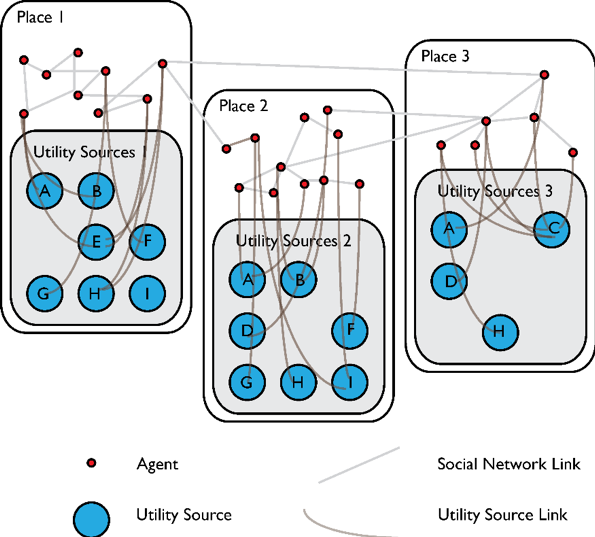Abstract
Agent-based modeling (ABM) has transformed the century-old field of mechanistic migration modeling, by shifting the unit of analysis from the city (in the gravity model) to the individual decision maker. Various efforts over the past decade have leveraged ABM tools to integrate competing labor opportunities, climatic shocks, and sharing across networks into decision-based models of migration patterns. We present the MIDAS (Migration, Intensification, and Diversification as Adaptive Strategies) framework, which draws on the 'push-pull-mooring' (PPM) theory of migration to integrate the influences of social networks, climatic shifts, and opportunities for livelihoods diversification on migration in a single framework. We demonstrate some of the strategic responses to opportunities that are possible in a true PPM modeling framework, including substitution of income streams, the choice to specialize or diversify, as well as to migrate in response to shocks. We observe what may be the emergence of a distinct class of agents within one of our experiments, highlighting the value of tools like MIDAS to capture migration and adaptive behaviors under conditions for which analogs do not yet exist in census datasets or otherwise. Importantly, we show how adaptation decisions depend strongly on a small number of behavioral parameters, key among them preferences for risk, for different forms of utility, and for time.

This work is licensed under a Creative Commons Attribution-NonCommercial 4.0 International License.
Copyright (c) 2019 Andrew Reid Bell, Carlos Calvo-Hernandez, Michael Oppenheimer

